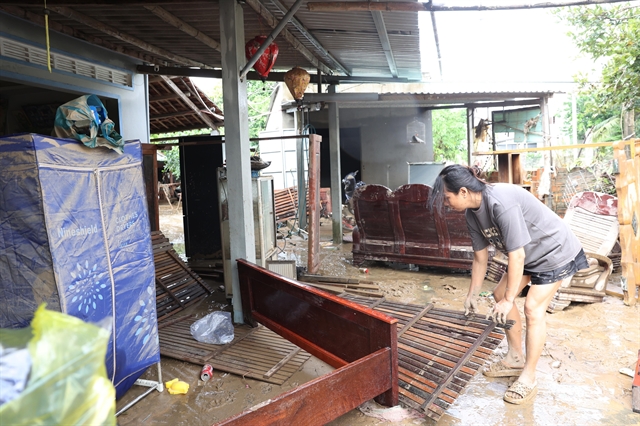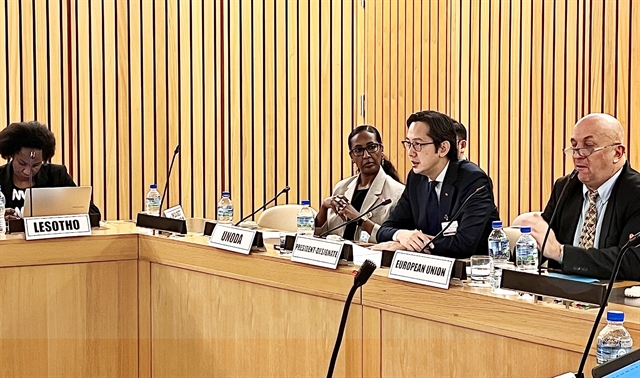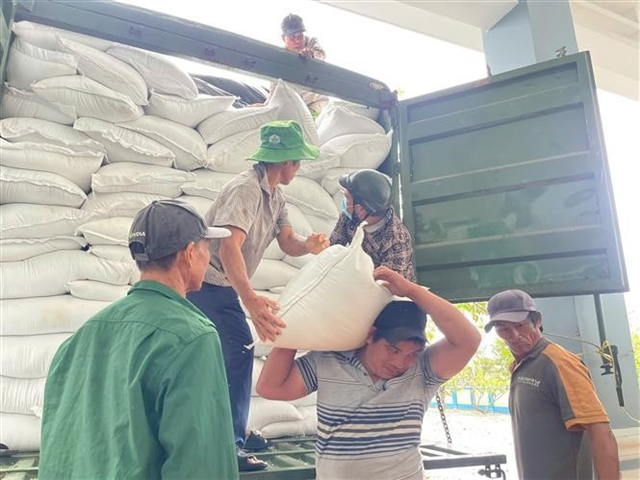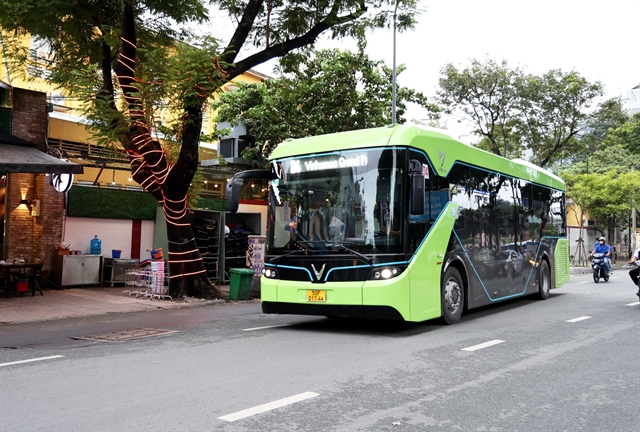 Environment
Environment

More people in the Cửu Long (Mekong) Delta are planting trees and building embankments made of natural materials to prevent erosion along rivers and canals.
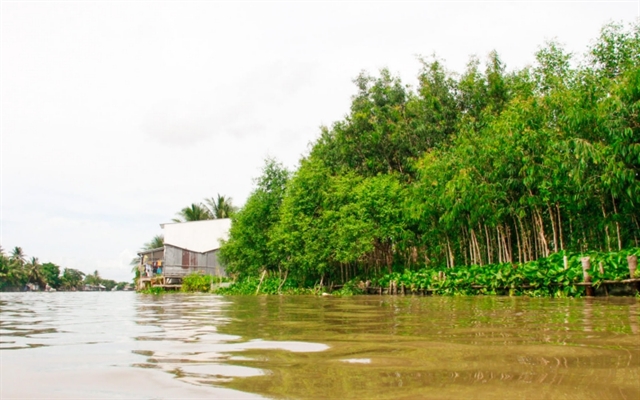
|
| A natural embankment in Phụng Hiệp District’s Búng Tàu Town in Hậu Giang Province helps to prevent riverbank erosion. – Photo nhandan.com.vn |
HCM CITY – More people in the Cửu Long (Mekong) Delta are planting trees and building embankments made of natural materials to prevent erosion along rivers and canals.
The delta, which has a dense river and canal network, has faced increasing erosion along rivers and canals in recent years because of human activity and climate change.
In Hậu Giang Province, the Irrigation Sub-department built three natural embankments with a total length of 380 metres on a pilot basis to prevent erosion in Phụng Hiệp District and Ngã Bảy Town in 2017.
The natural embankments are made by filling eroded areas with soil and setting up a barrier made of cajuput trunks or bamboo between the embankments and water.
Cajuput and crabapple mangrove trees are planted inside the barriers so that their roots prevent soil erosion. Permeable fabric or fine nets are installed outside the barrier to hold the soil.
At the embankments, water hyacinths are grown along banks to reduce the strength of waves hitting the banks.
In Phụng Hiệp District’s Búng Tàu Town, more than 100 households, mostly along the Búng Tàu and Ngang canals, have built such embankments along the canal bank in front of their houses.
Nguyễn Trường Sanh in Búng Tàu’s Tân Phú A2 Hamlet said he built an embankment on a 10 metre stretch of the canal two years ago and it cost only about VNĐ500,000 (US$22). Local authorities provided him free cajuput trees to grow on the embankment.
Later, he expanded the embankment to more than 100 metres long.
“The embankment is stable now, and the cajuput trees have grown and provide shade and look beautiful,” he said.
Local households in Búng Tàu grow other trees like điên điển (Sesbania sesban) and cà na (Elaeocarpus hygrophilus) on such embankments and harvest điên điển flowers and cà na fruits for sale.
In Hậu Giang, the Châu Thành District Farmers Association has built natural embankments to farmers to protect their lands along rivers and canals from erosion.
Nguyễn Thị Bé in Châu Thành’s Đông Phước A Commune said: “After the commune’s Farmers Association supported the model, we agreed to build such embankment.”
She has also donated bamboo plants and other trees to plant on the embankment.
Châu Thành has four such embankments, according to the district Farmers Association. The association plans to expand the model to erosion-prone areas and grow more crabapple mangrove trees on natural embankments.
Hậu Giang now has about 200km of natural embankments, according to the Irrigation Sub-department.
Localities in the delta are also expanding the model of planting trees along river and canal banks to prevent erosion.
In Cà Mau Province, people have planted mangrove trees along banks to prevent erosion since their roots are thick and protect the soil.
Natural embankments made by planting mangrove trees are popular in the districts of Cái Nước, Năm Căn and Đầm Dơi in Cà Mau.
In Đồng Tháp Province, water hyacinths are grown near riverbanks and crabapple mangrove trees planted at river banks to prevent erosion in Lai Vung District.
In Lai Vung’s Tân Dương Commune, people in Tân Thuận A and Tân Thuận B have done the same along the Sa Đéc – Vàm Cống River.
Nguyễn Thị Phương in Tân Dương said they provide shade and beautiful view, and stabilise the soil.
“Seeing the effectiveness of the model, many people have planted hyacinth and crabapple trees to protect the riverbank in front of their house,” she said.
Nguyễn Tấn Tài, chairman of the Tân Dương Farmers Association, said the model is low cost and is efficient. It is being expanded throughout the delta. – VNS

